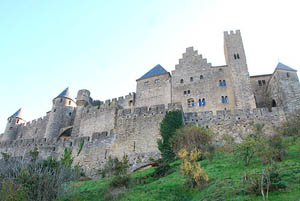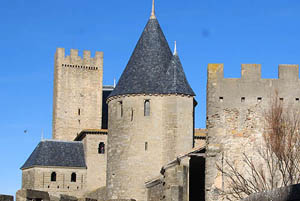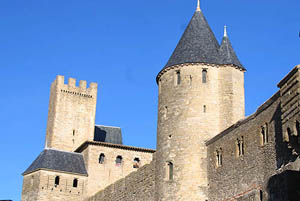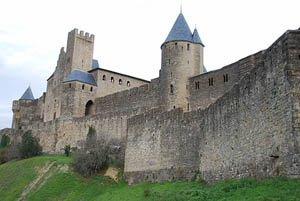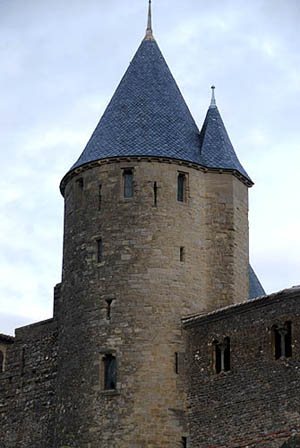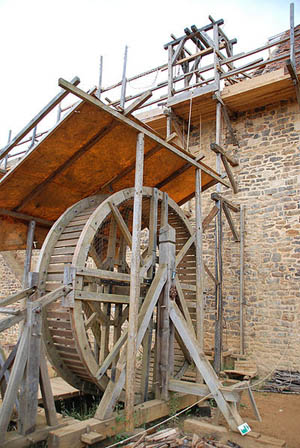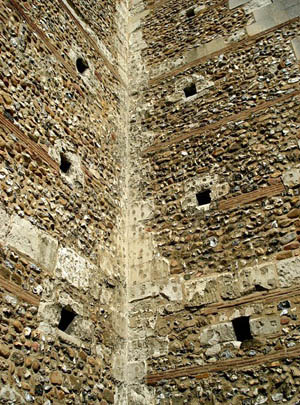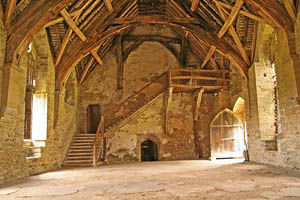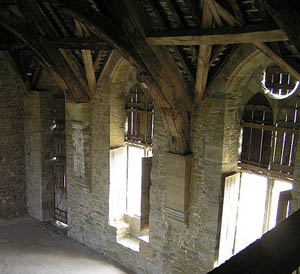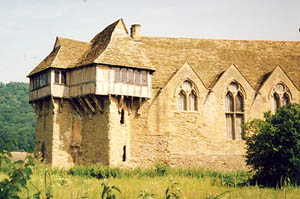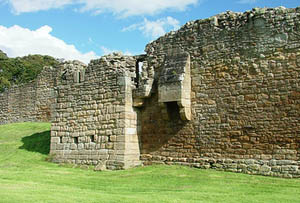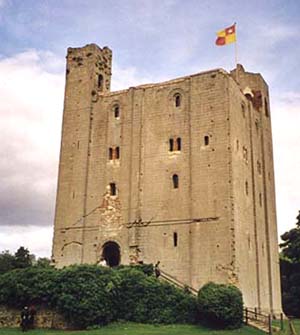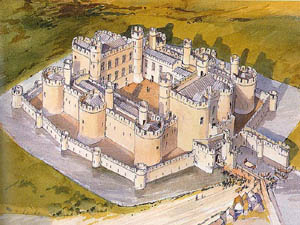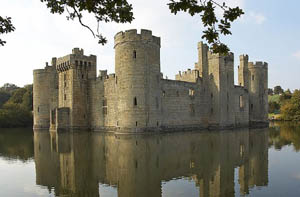Castle Architecture
|
|
|
|||||||||||||||||||||||||||||||||||||||||||||||||||||||||||||||||||||||||||||||||||||||
The Practicalities of Castle Building
Once the site of a castle had been selected, building material had to be selected. An earth and timber castle was cheaper and easier to erect than one built from stone. . A castle with earthen ramparts, a motte, and timber defences and buildings could have been constructed by an unskilled workforce. The source of man-power was probably from the local lordship, and the tenants would already have the necessary skills of felling trees, digging, and working timber necessary for an earth and timber castle. The construction of an earth and timber castle would not have been a drain on a client's funds. In terms of time, it has been estimated that an average sized motte – 5 m (16 ft) high and 15 m (49 ft) wide at the summit – would have taken 50 people about 40 working days. An exceptionally expensive motte and bailey was that of Clones in Ireland, built in 1211 for £20. The high cost of this one was attributable to the fact that labourers had to be imported. Stone castles cost a great deal more than those built from earth and timber. Even a very small tower, such as Peveril Castle, would have cost around £200. In the middle were castles such as Orford, which was built in the late 12th century for £1,400, and at the upper end were those such as Dover, which cost about £7,000 between 1112 and 1191. There are examples of some castles where stone was quarried on site, such as Chinon, Château de Coucy and Château Gaillard. Otherwise transport costs could increase the total costs substantially. Spending on the scale of the vast castles such as Château Gaillard (an estimated £15,000 to £20,000 between 1196 and 1198) was easily supported by The Crown, but for lords of smaller areas, castle building was a very serious and costly undertaking. It was usual for a stone castle to take the best part of a decade to finish. The cost of a large castle built over this time (anywhere from £1,000 to £10,000) would take the income from several manors, severely impacting a lord's finances. Costs in the late 13th century were of a similar order, with castles such as Beaumaris and Rhuddlan costing £14,500 and £9,000 respectively. Edward I's campaign of castle-building in Wales cost £80,000 between 1277 and 1304, and £95,000 between 1277 and 1329. Renowned designer Master James of Saint George, responsible for the construction of Beaumaris, explained the cost:
Not only were stone castles expensive to build in the first place, but their maintenance was a constant drain. They contained a lot of timber, which was often unseasoned and as a result needed careful upkeep. For example, it is documented that in the late 12th century repairs at castles such as Exeter and Gloucester cost between £20 and £50 annually. Medieval machines and inventions, such as the treadwheel crane, became indispensable during construction, and techniques of building wooden scaffolding were improved upon from Antiquity. Finding stone for shell keeps and castle walls was the first concern of medieval builders, and a prominent concern was to have quarries close at hand.
|
|
||||||||||||||||||||||||||||||||||||||||||||||||||||||||||||||||||||||||||||||||||||||
|
|||||||||||||||||||||||||||||||||||||||||||||||||||||||||||||||||||||||||||||||||||||||
|
|
Learn More about Castle Architecture
 |
|
|||||||||||||||||||||||||||||||||||||||||||||||||||||||||||||||||||||||||||||||||||||
 |
|||||||||||||||||||||||||||||||||||||||||||||||||||||||||||||||||||||||||||||||||||||||
|
|
|
|
|||||||||||||||||||||||||||||||||||||||||||||||||||||||||||||||||||||||||||||||||||||
|
|
|||||||||||||||||||||||||||||||||||||||||||||||||||||||||||||||||||||||||||||||||||||||
|
|
|||||||||
| :::: Link to us :::: Castle and Manor Houses Resources ::: © C&MH 2010-2014 ::: contact@castlesandmanorhouses.com ::: Advertising ::: |
